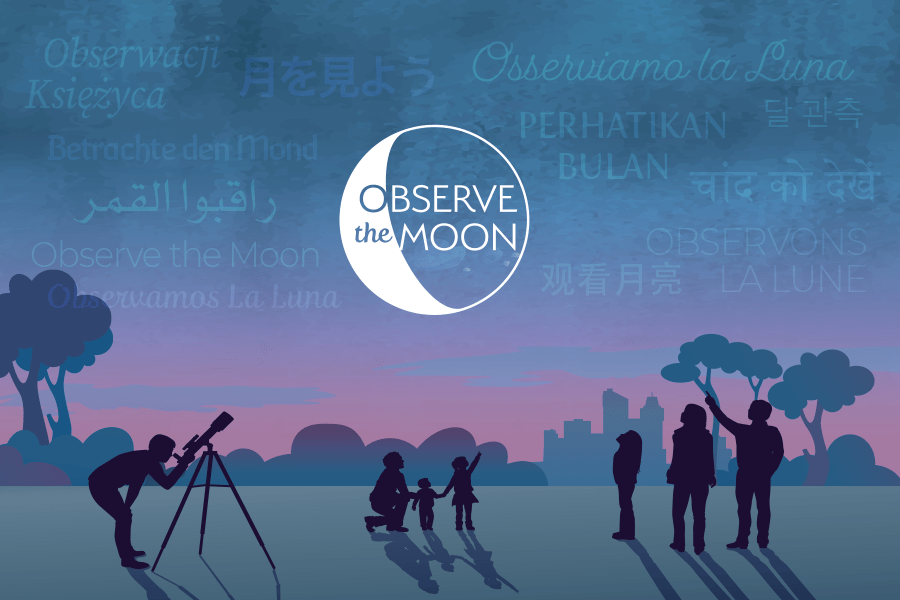Educational Resources
Learn all about the Moon with these events, activities, and resources.
2025 International Observe the Moon Night
An annual worldwide celebration of lunar science and exploration.
Each year, everyone on Earth is invited to observe and learn about the Moon together, and to honor cultural and personal connections with our nearest celestial neighbor. Save the date for the next event on October 4, 2025!
Read More
Celebrate the Moon at Your Ballpark
Share the Moon with baseball fans.
The Moon is a great way to bring lunar science and exploration to the ballpark through hands-on activities, demonstrations, and other interactive elements. We invite you to join us in celebrating our nearest celestial neighbor!
Read More

Lunar Activities
Collected here are a few educational activities related to eclipse science that particularly highlight the Moon, recommended by the LRO education team. You are welcome to appropriately modify the activities as needed to ensure they meet the needs of your audience as well as the space, time, and resources you have available.
Informal Educator Moon Resources
Visit NASA's official page of all things Moon!
LRO satellite illustrations, videos, and multimedia
The award winning children's book, "Max Goes to The Moon" (for planetariums and flat screens).
from NASA Space Science Data Coordinated Archive (NSSDC)
from NASA Space Science Data Coordinated Archive (NSSDC)
make a mini comic book about cosmic rays and CRaTER (Cosmic Ray Telescope for the Effects of Radiation)
These double sided informational lithographs and posters can be printed to support a variety of lunar studies.
Download a variety of moon posters from the Lunar and Planetary Institute
Take a look at where LRO is now with the Lunar Reconnaissance Orbiter Camera (LROC).
LRO Datasets for Science On a Sphere
A global mosaic of the Moon captured by LRO's Wide Angle Camera.
High resolution global topography of the Moon from LRO's Lunar Orbiter Laser Altimeter.
A global mosaic of the surface roughness of the Moon, derived from data collected by LRO's Lunar Orbiter Laser Altimeter.
A global mosaic of slopes found on the surface of the Moon, derived from data collected by LRO's Lunar Orbiter Laser Altimeter.
A short, narrated Science On A Sphere show depicting the evolution of our Moon all the way from when it was a ball of magma orbiting the Earth, through today.
A short, narrated Science On a Sphere show touching on some of the essential scientific subjects that LRO scientists study.
A short animation showing sunlit and shadowed portions of the Moon over the course of a month.
Teacher Resources
Education and Outreach professionals from the LRO Mission developed these lessons, activities and resources. For grades 6-8
A teacher's guide with activities for Earth and Space Sciences. For grades 4-12
Phases of the Moon is at the top of the list of things that students seriously misunderstand. Most teachers run into problems in trying to explain the Moon's phases to youngsters, and evidence suggests that many have a very difficult time with the concepts. For grades 3 - 12
The Lunar Orbiter Photographic Atlas of the Moon by Bowker and Hughes (NASA SP-206) is considered the definitive reference manual to the global photographic coverage of the Moon. For grades 7-14
Eclipses have long been a source of mystery and spectacle. These events were viewed with fear and dread in the past and, even today, still thrill. For grades 3 - 12
In this activity guide, NASA and DESIGN SQUAD team up to inspire a new generation of engineers. The guide offers six hands-on challenges that bring engineering and NASA's moon missions to life for kids at events, and in school, and afterschool programs. For grades 3 - 12
